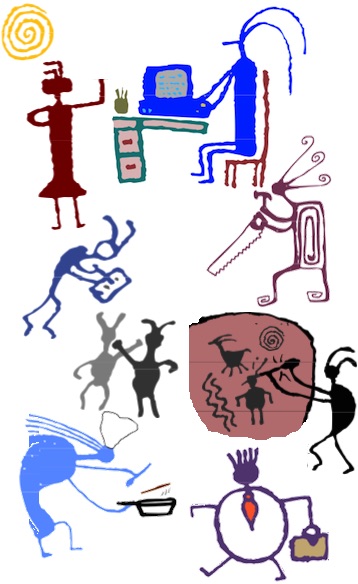
If your nonprofit, school, government program, charity or other mission-based initaitive wants access to the greatest amount of talent and resources that volunteers can possibly bring to your program, you have to make all volunteering as accessible as possible. That means looking for ways to accommodate a myriad of people who have different abilities, needs, personality types and work styles.
Accessibility and diversity are about accommodating everyone, not just people with disabilities or people who are from minority groups. You want to make volunteering as welcoming to the widest number of people possible. – Volunteer expert Susan Ellis.
There may be a fantastic web designer out there who would love to volunteer at your organization, but who also isn’t very talkative and doesn’t make much eye-contact and, therefore, might be seen by some as unfriendly. Is your screening process such that you would still welcome this candidate into your organization?
There may be a fantastic person with the talents, skills and time to run your new volunteer orientations, but she doesn’t have a car. Do you have clear guidelines on your web site on how to get to your agency by mass transit?
There may be a fantastic writer out there who could tell stories about your organization in such a way as to move new donors to open their pocketbooks and new volunteers to sign up to help, but who also legally blind. Is your web site accessible so that that fantastic writer can read your web site and blog and online newsletter with an accessibility screen reader?
There may be a fantastic graphic designer out there who could do amazing work for your organization online and in your print material, but who also uses a wheelchair for mobility, or has no transportation to get to your work site. Could that volunteer with the mobility issues get through your front door for an interview? Would you be willing to have your mandatory interview online via Skype? Would you be willing to accommodate the volunteer through virtual volunteering?
Do you have a diversity of tasks – some that can be done by someone sitting at a desk, others that require a lot of movement, maybe even carrying things and walking a lot? Some that don’t require a volunteer to interact much with others and some that require a volunteer to regularly interact and help others? Some that put volunteers together as a group? Some that allow volunteers to provide service for a few hours on a Saturday, without any ongoing commitment? Leadership roles? Some that require expertise, some that don’t require any? Some that can be done during regular work hours and some that can be done on evenings or weekends?
I’ve launched a new resource to help you understand the advantages for your program in making your volunteer engagement as accessible as possible and how to do it. The resource covers task design, ethics in internship design, accessibility for people with disabilities, messaging, language use and more.
Of course, not every volunteer role can accommodate everyone: a role may absolutely require a person with a clear, understandable speaking voice. Or may require someone that can carry a certain amount of weight and walk a certain distance. Or to interact regularly with other people. Or may require structural changes to a building that are too expensive for your program to afford. Or may require a volunteer to be calm and thoughtful in highly stressful situations and to be able to manage the anxiety that can arise from such work. But thinking about ways to accommodate a variety of people at your organization as volunteers will give your program access to an amazing range of talent, skills, energy and knowledge you will miss out on otherwise.
And one more thing: nonprofits, NGOs, charities and others MUST take a leadership role in creating community cohesion, in the face of the rise of violent extremism all over the world, including the USA, and the increasing belief in demonizing the “other” – people of a particular religion (or no religion at all), people of a particular ethnicity, immigrants, people with mental illness and more. It’s a bold, vital statement to make your program’s volunteer engagement as inclusive as possible, as representative of everyone in your community as possible. It’s a practice and state that affirms to everyone – board members, consultants, EVERYONE – that your organization makes inclusion and accessibility a priority.
Also see:
- Research Explaining How Websites Encourage Volunteering & Philanthropy
- Volunteering to build community cohesion
- Welcoming immigrants as volunteers at your organization
- the growing youth & loneliness crisis (& lack of empathy crisis) – could volunteer engagement help?
- “Internet-mediated volunteering – the impact for Europe“, part of the ICT4EMPL Future Work project. This 2013 study on virtual volunteering in European countries includes information on volunteering as a path to employability and social inclusion, especially for young people.
- Volunteering to Address Your Own Mental Health (Depression, Loneliness, Anxiety, etc.)
- can volunteer engagement cultivate innovation?
- Volunteer management is community engagement

If you have benefited from this blog or other parts of my web site or my YouTube videos and would like to support the time that went into researching information, developing material, preparing articles, updating pages, etc. (I receive no funding for this work), here is how you can help.
